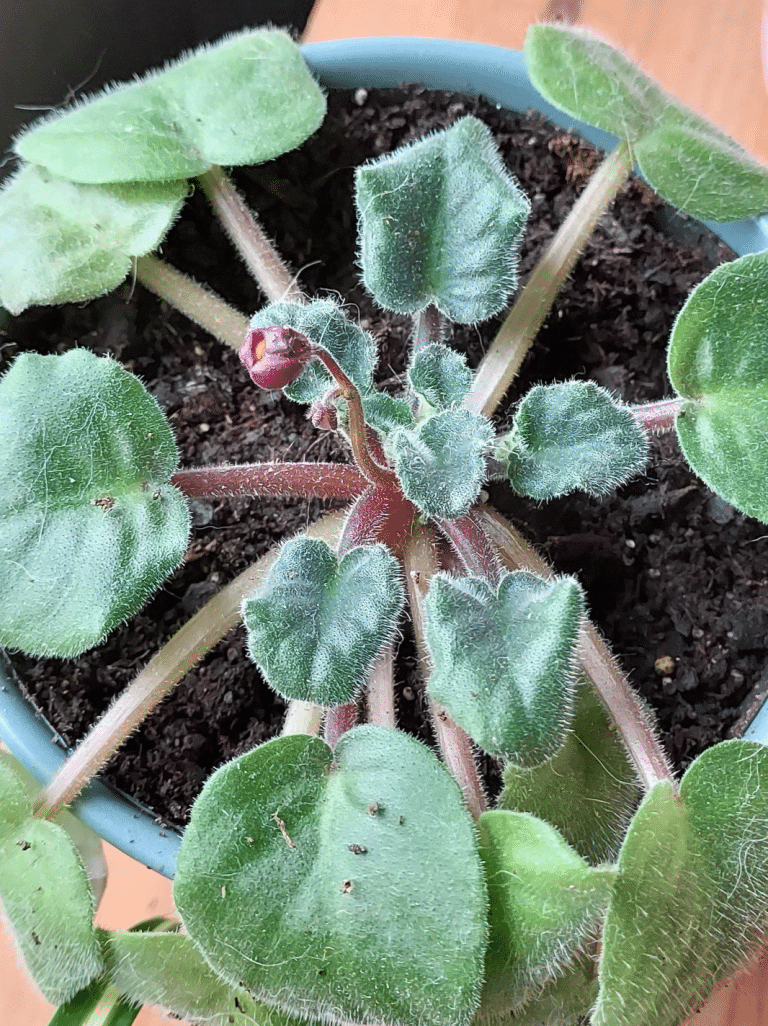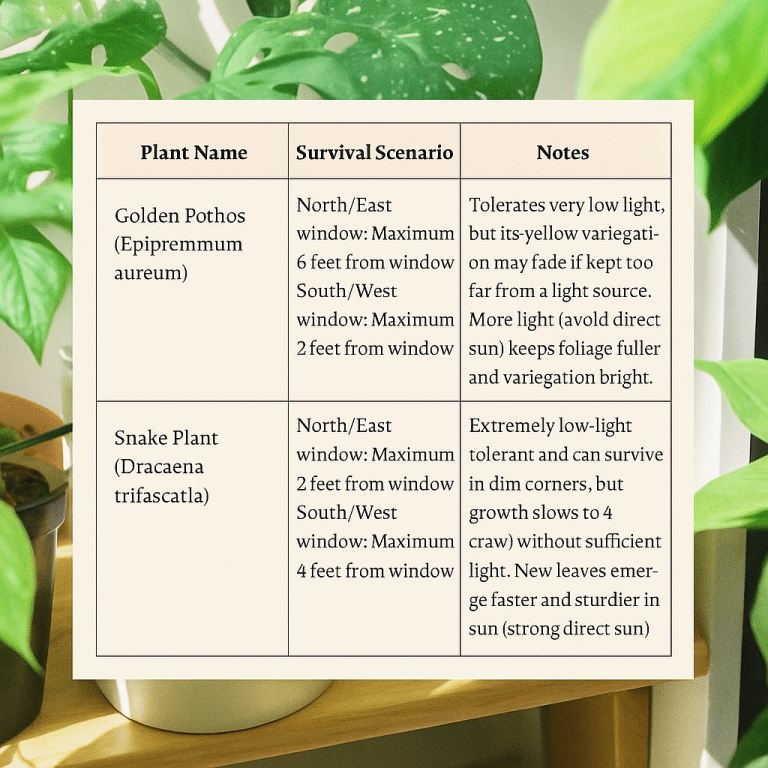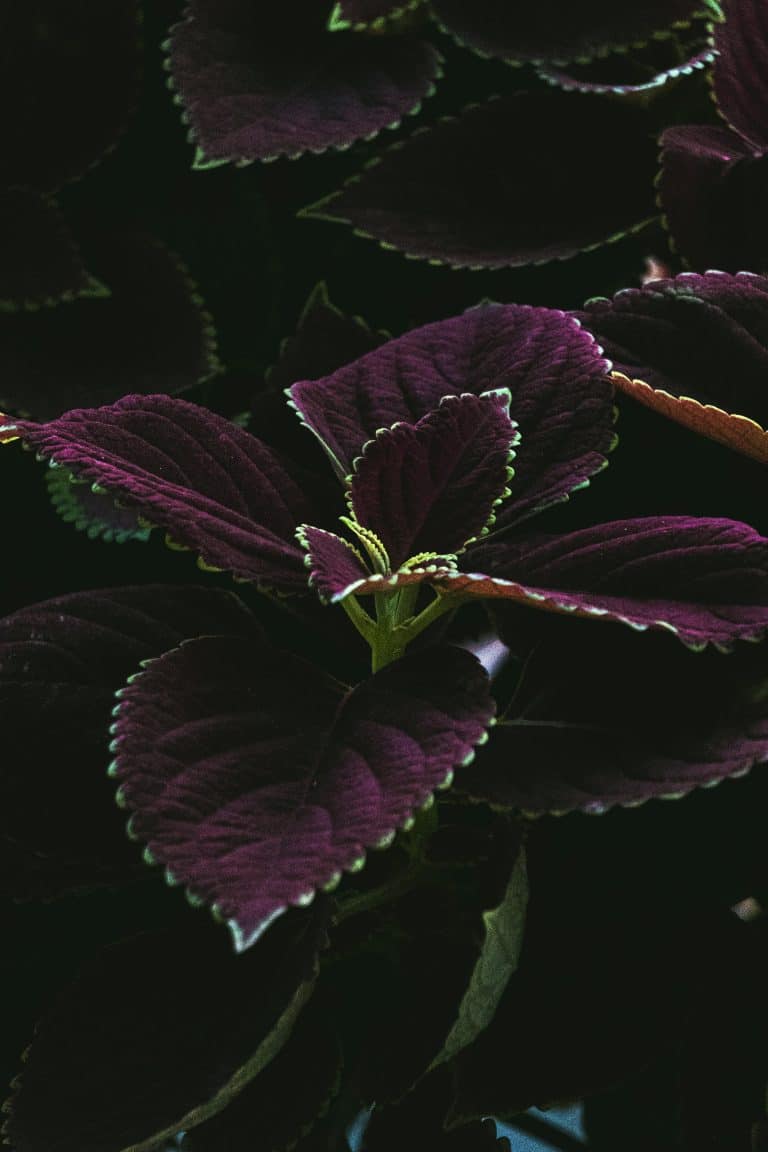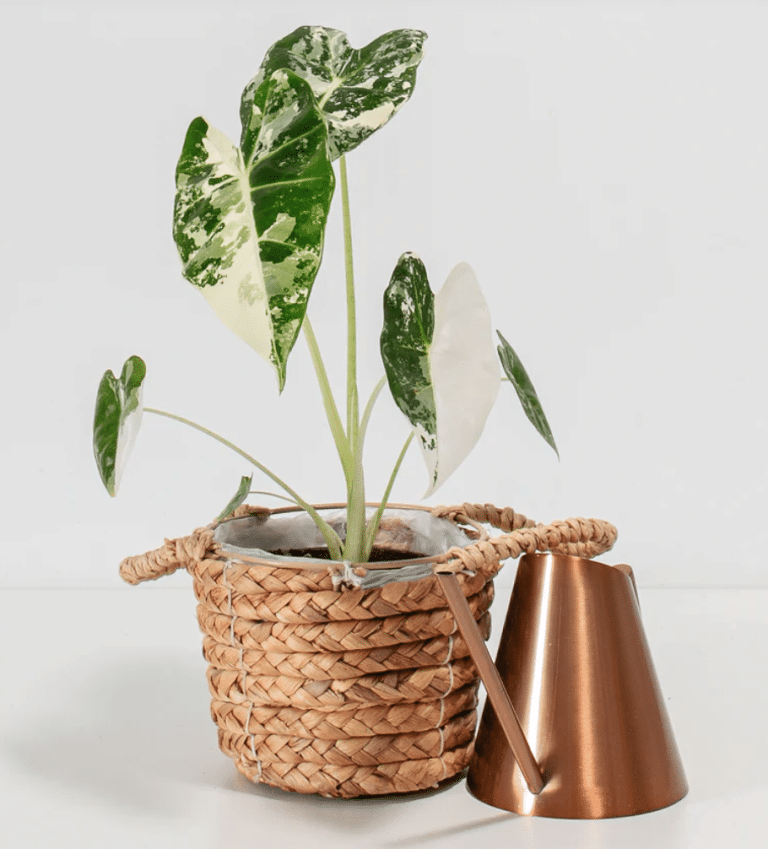Houseplant Maintenance Index: Ease-of-Care Ratings for 50 Popular Houseplants
Which houseplants are truly easy to care for? This data-backed index rates 50 popular houseplants across watering, light, humidity, pests, and growth—so you can choose with confidence.
When people ask us for “easy houseplants,” we’ve learned to ask: what kind of easy do you mean? Some plants don’t need much water. Others hate being moved. Some are unfazed by dry air – others throw a tantrum if you miss a misting!
That’s why we built this guide—to break down “low maintenance” into real categories and create a scoring system you can actually use.
We’ve lived with hundreds of plants in our Brooklyn home. Some we forgot to water for weeks. Some we couldn’t stop pruning. This index reflects what actually makes a plant easy—or frustrating. And it’s designed to help you pick the right one from the start!
II. Our Scoring Criteria: What the Ratings Mean
Not all plant struggles are created equal. That’s why we rated plants across five key categories, each on a 1 to 5 scale.
Rating | Meaning |
|---|---|
1 | Carefree (very low maintenance) |
2 | Easy (low effort required) |
3 | Moderate maintenance |
4 | High maintenance |
5 | Fussy (frequent attention needed) |
The lower the Maintenance Index, the easier the plant is overall. Here’s what each category really looks at.
🔍 The 5 Rating Categories:
Category | What It Measures |
|---|---|
Watering | Can the plant go a week—or several—without water and still look great? |
Light Flexibility | Does it tolerate different window directions or need a specific setup? |
Humidity | Can it handle dry indoor air, or does it brown without daily misting? |
Pests | Is it mostly pest-free, or a magnet for fungus gnats, mites, or scale? |
Growth | Does it stay tidy or grow wild, needing repotting, trimming, or constant care? |
These scores aren’t based on opinions. We pulled from The Sill, Better Homes & Gardens, and Sargent’s Gardens, then tested everything ourselves.
Our Brooklyn brownstone is a mix of bright windows, low light nooks, and dry winter air. Perfect for seeing what survives… and what sulks.
Ease-of-Care Ratings chart for 50 Popular Houseplants
How to Use This chart?
If you’re new to plants, pick anything with a Maintenance Index of 1.0 to 2.0. You’ll thank yourself later. Already have a few houseplants and looking to expand? This chart helps you decide which plant matches your time and tolerance.
We use it as a quick filter when shopping online or reorganizing rooms. It’s also a great way to set expectations. You’ll find a link to our “50 Low Maintenance Houseplants” visual gallery if you want photos and full care guides.
And honestly—we’d love if you shared your own rankings. It helps us update future versions based on real-life care, not just what the books say!
Plant Name | Watering (1–5) | Light (1–5) | Humidity (1–5) | Pests (1–5) | Growth (1–5) | Maintenance Index | Summary |
|---|---|---|---|---|---|---|---|
ZZ Plant | 1 – Tolerates weeks without watering | 1 – Grows even in very low light | 1 – Fine with dry indoor air | 1 – Rarely affected by pests | 1 – Slow grower, needs little pruning | 1.0 | Incredibly forgiving and drought-tolerant; ideal for beginners |
Golden Pothos | 1 – Drought-tolerant; forgiving of infrequent watering | 1 – Adapts to low or bright light | 1 – Handles dry air easily | 2 – Occasionally gets mealybugs | 3 – Fast-growing vine, may need trimming | 1.6 | Very low maintenance with fast growth in a wide range of conditions |
Snake Plant | 1 – Infrequent watering; prone to rot if overwatered | 1 – Thrives in low to medium light | 1 – Prefers dry air | 2 – Generally pest-free | 1 – Extremely slow-growing | 1.2 | Tough and adaptable plant ideal for forgetful owners |
Aloe Vera | 1 – Requires dry conditions, water every few weeks | 3 – Needs bright light to thrive | 1 – Thrives in dry air | 2 – Occasionally gets mealybugs | 2 – Slow-growing but manageable | 1.8 | Hardy succulent with minimal watering needs |
Peace Lily | 4 – Needs consistently moist soil | 2 – Tolerates low light, better with medium | 3 – Prefers higher humidity | 2 – Some susceptibility to spider mites | 3 – Moderate growth with regular deadheading | 2.8 | Easy but water and humidity sensitive |
Spider Plant | 2 – Tolerates occasional drought | 2 – Best in bright, indirect light | 2 – Adapts to most homes | 2 – Rarely affected | 4 – Produces many offshoots | 2.4 | Prolific and resilient with pups that need management |
Jade Plant | 2 – Drought-tolerant | 4 – Requires bright, direct light | 1 – Thrives in dry air | 3 – Susceptible to pests if overwatered | 2 – Slow-growing shrub | 2.4 | Great for bright spots, but overwatering is a common issue |
African Violet | 4 – Sensitive to over/underwatering | 3 – Needs bright, indirect light | 3 – Needs above-average humidity | 3 – Prone to pests if air is dry | 3 – Requires grooming and repotting | 3.2 | Demands stable conditions to bloom well year-round |
Rubber Plant | 3 – Likes consistent moisture | 3 – Needs bright, indirect light | 2 – Tolerates normal humidity | 3 – May attract mites or scale | 3 – Becomes large, needs pruning | 2.8 | Easygoing but needs space and occasional cleaning |
Money Tree | 2 – Prefers slight drying between watering | 3 – Likes bright, indirect light | 3 – Benefits from added humidity | 2 – Low risk of pests | 2 – Moderate growth | 2.4 | Forgiving tropical tree for indirect light spots |
Lucky Bamboo | 1 – Grows in water, needs occasional changes | 1 – Tolerates very low light | 1 – Tolerates dry air well | 1 – Rarely affected by pests | 1 – Very slow-growing | 1.0 | Almost unkillable plant for low-light indoor spaces |
English Ivy | 3 – Needs consistent moisture | 3 – Prefers bright, indirect light | 5 – Requires high humidity | 5 – Prone to spider mites | 3 – Fast-growing and trailing | 3.8 | Beautiful but high-maintenance indoors due to humidity and pest issues |
Boston Fern | 5 – Requires consistently moist soil | 2 – Prefers indirect light | 5 – Needs very high humidity | 3 – Susceptible to pests in dry air | 3 – Regular trimming needed | 3.6 | High-maintenance plant best suited for bathrooms or greenhouses |
Areca Palm | 3 – Moist soil preferred | 3 – Needs bright, indirect light | 3 – Enjoys higher humidity | 3 – Occasionally suffers pests | 3 – Moderate growth indoors | 3.0 | Moderate maintenance palm needing bright light and some humidity |
Fiddle Leaf Fig | 4 – Needs consistent watering | 5 – Requires bright, indirect light | 4 – Dislikes dry air or drafts | 4 – Prone to pests | 3 – Fast-growing and tall | 4.0 | Fussy and dramatic but beautiful in ideal conditions |
Parlor Palm | 3 – Water when top soil dries | 2 – Tolerates low light | 2 – Adapts to indoor humidity | 2 – Low pest risk | 1 – Very slow-growing | 2.0 | One of the easiest palms for low-light environments |
Bromeliads | 3 – Water central cup and soil | 3 – Needs filtered bright light | 5 – Requires high humidity | 2 – Generally pest-free | 3 – Pups need separating | 3.2 | Unique look but needs high humidity to thrive |
Dragon Tree | 2 – Water when soil dries | 2 – Handles low to bright light | 1 – Tolerates dry air | 2 – Minor pest issues | 2 – Moderate growth | 1.8 | Easy, spiky plant suited for beginners |
Croton | 4 – Moist soil needed | 4 – Needs direct sun to keep color | 4 – Needs high humidity | 4 – Attracts pests in dry air | 3 – Medium growth rate | 3.8 | Colorful but fussy; frequent leaf drop if unhappy |
Chinese Evergreen | 2 – Allow topsoil to dry | 1 – Grows in very low light | 2 – Tolerates indoor air | 1 – Very pest-resistant | 2 – Slow to moderate growth | 1.6 | One of the best low-light, low-care foliage plants |
Ponytail Palm | 1 – Extremely drought-tolerant | 2 – Prefers bright light | 1 – Handles dry air | 1 – Very pest-resistant | 1 – Very slow growth | 1.2 | Quirky and ultra-forgiving of neglect |
Oyster Plant | 2 – Water weekly | 2 – Needs indirect light | 2 – Tolerates average humidity | 2 – Minimal pests | 2 – Compact, manageable growth | 2.0 | Hardy and colorful foliage plant for shelves or desktops |
Kalanchoe | 2 – Water when dry | 3 – Needs bright light to bloom | 1 – Not humidity sensitive | 2 – May get mealybugs | 2 – Moderate size and speed | 2.0 | Compact blooming succulent with minimal care needs |
Jasmine | 3 – Moist soil needed | 4 – Bright light essential for bloom | 3 – Needs cool, humid air | 4 – Prone to pests indoors | 4 – Fast-growing vine | 3.6 | Fragrant, rewarding, but demanding indoor climber |
Heartleaf Philodendron | 2 – Allow top inch to dry | 1 – Grows in very low light | 2 – Tolerates indoor air | 1 – Rarely pest-prone | 2 – Fast vine, easy to trim | 1.6 | Classic trailing plant, nearly foolproof to grow |
Silver Leaf Philodendron | 2 – Water when dry | 2 – Needs medium light | 2 – Tolerates dry air | 2 – May get pests if neglected | 2 – Slow to moderate growth | 2.0 | Similar to pothos, with velvety leaves and low demands |
Polka Dot Begonia | 4 – Dislikes dry soil | 3 – Needs filtered light | 4 – Prefers high humidity | 3 – Prone to mildew | 3 – Tall and leggy growth | 3.4 | Stunning but temperamental cane begonia |
Black Velvet Alocasia | 4 – Even moisture required | 3 – Indirect light needed | 5 – High humidity essential | 4 – Prone to mites | 1 – Very slow grower | 3.4 | Beautiful but sensitive “jewel” plant |
Bird’s Nest Anthurium | 3 – Moist but not soggy | 3 – Needs indirect light | 3 – Likes moderate humidity | 2 – Few pests | 2 – Compact rosette growth | 2.6 | Unique texture with reasonable care needs |
Ficus Audrey | 3 – Moist, not wet | 4 – Bright indirect light | 3 – Prefers humidity | 3 – May attract pests | 3 – Upright indoor tree | 3.2 | Easier ficus than lyrata, but still needs good light |
Homalomena ‘Selby’ | 2 – Let top dry | 2 – Medium light ideal | 2 – Adapts to homes | 2 – Rare pests | 2 – Slow, tidy grower | 2.0 | Durable and pretty alternative to aglaonema |
Prayer Plant | 4 – Constant moisture | 2 – Medium to low light | 4 – High humidity a must | 4 – Mite-prone | 3 – Creeping grower | 3.4 | Beautiful but fussy about water, air, and pests |
Gardenia | 5 – Moist, acidic soil | 5 – Needs full sun | 5 – High humidity essential | 5 – Pest-prone | 3 – Vigorous when happy | 4.6 | One of the hardest houseplants to maintain indoors |
Sweetheart Hoya | 1 – Water very rarely | 3 – Bright light needed to grow | 2 – Fine in dry air | 2 – Rare pests | 1 – Often doesn’t grow | 1.8 | Cute but static; thrives with neglect |
Monstera adansonii | 3 – Water weekly | 3 – Medium to bright light | 3 – Enjoys humidity | 4 – Thrips or mites possible | 4 – Fast vine | 3.4 | Trendy plant that needs pest watch and support |
String of Pearls | 4 – Prone to overwatering | 5 – Needs bright light | 1 – Prefers dry air | 2 – Fungus gnats if soggy | 3 – Trailing succulent | 3.0 | Pretty but picky about watering and light |
Cast Iron Plant | 2 – Let dry out fully | 1 – Thrives in low light | 1 – Ignores dry air | 1 – Very pest-free | 1 – Barely grows | 1.2 | Nearly unkillable plant for dark corners |
Assorted Succulents | 2 – Dry soil a must | 4 – Bright light only | 1 – Dislikes humidity | 2 – Some pest issues | 2 – Small and slow | 2.2 | Hardy in sun and drought, not shade |
Flamingo Flower | 3 – Even moisture | 3 – Medium to bright light | 4 – Needs humidity | 3 – Watch for pests | 3 – Reblooms with care | 3.2 | Colorful but slightly demanding |
Olive Tree | 3 – Allow soil to dry | 5 – Needs direct sun | 2 – Dislikes damp air | 4 – Prone to scale and mites | 3 – Slow indoor growth | 3.4 | Beautiful but tricky in low light and indoors |
Bird of Paradise | 3 – Weekly watering | 5 – Needs full sun | 3 – Prefers humidity | 3 – Mites possible | 4 – Grows large | 3.6 | Showy plant that needs big space and sun |
Corn Plant | 2 – Drought-tolerant | 2 – Handles low light | 1 – Normal air is fine | 2 – Low pest risk | 2 – Slow-growing cane | 1.8 | Classic indoor workhorse plant |
Philodendron ‘Birkin’ | 3 – Moderate watering | 3 – Needs indirect light | 3 – Dislikes dry air | 2 – Rare pests | 2 – Compact and slow | 2.6 | Stylish philodendron needing stable care |
Tradescantia Zebrina | 3 – Keep moist | 3 – Needs bright light | 2 – Prefers humidity | 2 – Watch for mites | 4 – Very fast grower | 2.8 | Easy to grow but messy if untamed |
Hoya (Wax Plant) | 2 – Let dry completely | 3 – Loves bright light | 2 – Humidity helps flowering | 2 – Low pest issues | 2 – Moderate trailing vine | 2.2 | Great hanging plant that thrives with patience |
Monstera deliciosa | 3 – Weekly watering | 3 – Bright indirect light | 3 – Prefers humidity | 3 – Occasional pests | 4 – Very fast-growing | 3.2 | Big, bold foliage plant with easy needs |
Dracaena | 2 – Water every 1–2 weeks | 2 – Tolerates low light | 1 – Normal air is fine | 2 – Low pest risk | 2 – Upright cane shape | 1.8 | Very adaptable indoor plant for homes and offices |
Dumb Cane | 3 – Moderate watering | 3 – Needs filtered light | 2 – Average humidity fine | 3 – Moderate pest risk | 3 – Grows tall | 2.8 | Beautiful but mildly sensitive foliage plant |
Calathea | 5 – Demands moisture | 3 – No direct sun | 5 – Needs high humidity | 4 – Spider mite-prone | 3 – Regular trimming | 4.0 | Dramatic foliage, dramatic needs |
Notable Findings: Best & Worst
Top 5 Easiest (Index 1.0–1.5)
ZZ Plant – Doesn’t care where you put it. Or when you last watered it. This is the plant we forget on purpose.
Snake Plant – Can handle dry air, neglect, and shady spots. It doesn’t grow fast, but that’s part of its charm.
Cast Iron Plant – Honestly the most overlooked low-light plant out there. We’ve had one survive a cold stairwell for months.
Pothos – If you need one plant that adapts to everything and grows fast, this is it. We’ve rooted it in cups, jars, and mugs.
Aloe Vera – Give it light and forget it. It’s slow but chill—and useful for burns if you cook like we do.
⚠️ Most Demanding (Index > 3.5)
Boston Fern – It’s not that it’s dramatic—it’s just always thirsty. And dusty. And dropping fronds.
Maidenhair Fern – Gorgeous, but needs spa-level humidity. Ours sulked the moment winter heat came on.
Calathea – Moves its leaves, but also moves us to frustration. We’ve never had one go more than a week without fussing.
Fiddle Leaf Fig – Looks like a tree, behaves like a toddler. Touchy about light, drafts, and overwatering. And under.
How We Compiled This Index
We didn’t guess. We measured, neglected, trimmed, and observed plants in the chaos of real life. Between the 8 of us at our Brooklyn community home, we’ve cared for hundreds of houseplants—some easy, some divas, many in between.
We pulled in trusted feedback from The Sill, Sargent’s Gardens, and Better Homes & Gardens—but also trusted our lived experience.
This chart is our way of saying: here’s what actually matters when choosing a plant. No fluff. No guilt: all easy to use information that just makes practical sense~ Whether you’re a total beginner or just tired of chasing misting schedules, this index is a tool you’ll want to come back to — every time!
FAQs
Can I grow plants in a windowless room?
Only with a grow light. Even snake plants need some daily light.
How much sun is too much?
More than 2–3 hours of direct sun will scorch most houseplants unless they’re succulents.
What’s best for a north-facing apartment?
Low-light champs like pothos, ZZ plants, and cast iron plant. Keep them within 2–4 feet of the window.
How can I tell if my plant isn’t getting enough light?
Look for legginess, pale leaves, or zero new growth. It’s usually a sign to move it closer or rotate more often.
How We Compiled This Guide
We live in a Brooklyn brownstone with every kind of light situation—from south-facing windows that roast, to dim, deep corners that test even our toughest plants.
This guide comes from years of trial, error, and way too many “why is this plant dying?” searches.
We pulled from our own experience, and cross-checked our observations with trusted sources like Houseplant Journal, The Spruce, Apartment Therapy, and Better Homes & Gardens.
Everything here is meant to be useful. Real. Implementable. No gadgets required.






